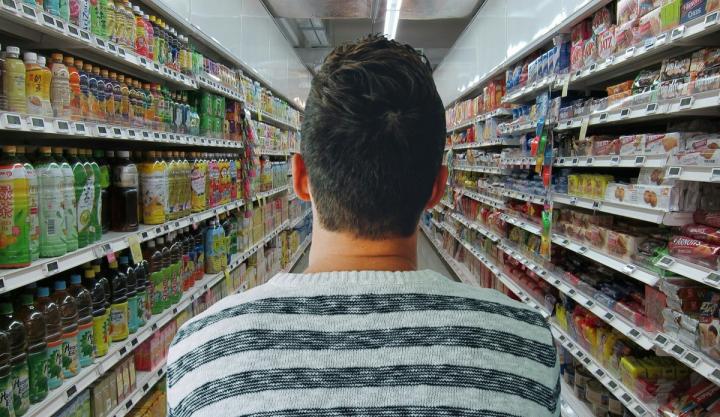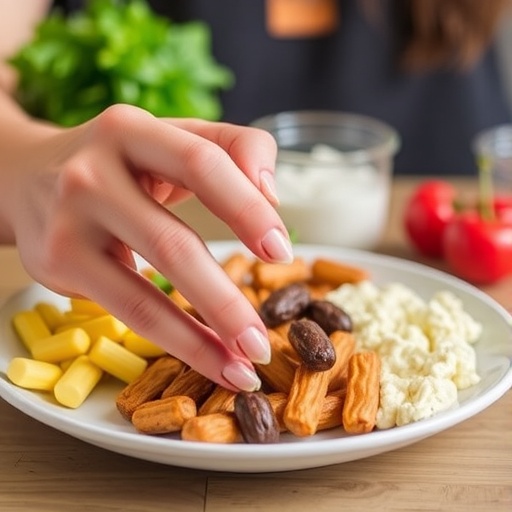New study highlights the importance of interdisciplinary collaborations to reduce global food waste due to date labeling

Credit: Mohamed Mahmoud Hassan
Minimizing food waste is top of mind right now during the COVID-19 global pandemic, with the public concerned about the potential ramifications for our food supply chain. But even before COVID-19, given concerns about a rapidly growing population and hunger around the world, the Food and Agriculture Organization of the United Nations (FAO) issued a global call for zero tolerance on food waste. However, the lack of regulation, standardization, and general understanding of date labeling on food products (such as “best by” and “use by” dates) leads to billions of dollars per year in food waste in the United States alone. Many people don’t realize that date labels on food products (with the exception of infant formula) are entirely at the manufacturer’s discretion and are not supported by robust scientific evidence. To address this concern and combat global food waste, researchers at the University of Maryland have come together across departments in the College of Agriculture & Natural Resources with the goal of clarifying the science or lack thereof behind food date labels, highlighting the need for interdisciplinary research and global research trends in their new publication in Food Control.
“We have 50 different types of date labels that are currently used in the US because there is no regulation – best by, best if used by, use by – and we as consumers don’t know what these things mean,” says Debasmita Patra, assistant research professor in Environmental Science and Technology and lead author on the paper. “The labeling is the manufacturer’s best estimation based on taste or whatever else, and it is not scientifically proven. But our future intention is to scientifically prove what is the best way to label foods. As a consumer and as a mom, a best by date might raise food safety concerns, but date labeling and food safety are not connected to each other right now, which is a wide source of confusion. And when billions of dollars are just going to the trash because of this, it’s not a small thing.”
According to the United States Department of Agriculture’s Economic Research Service (USDA-ERS), Americans discard or waste about 133 billion pounds of food each year, representing $161 billion and a 31% loss of food at the retail and consumer level. According to the FDA, 90% of Americans say they are likely to prematurely discard food because they misinterpret date labels because of food safety concerns or uncertainty on how to properly store the product. This simple confusion accounts for 20% of the total annual food waste in the United States, representing more than 26 billion pounds per year and over $32 billion in food waste.
“Food waste is a significant threat to food security,” adds Paul Leisnham, associate professor in Environmental Science and Technology and co-author. “Recognition of food waste due to confusion over date labeling is growing, but few studies have summarized the status of the research on this topic.”
This was the goal of their latest publication, gathering support and background for their future work to reduce food waste, and providing guidance for future areas of research in this field. In order to achieve this, Patra enlisted Leisnham in her own department, but also relied on computational support and food quality and safety expertise from Abani Pradhan, associate professor in Nutrition and Food Science, and his postdoctoral fellow Collins Tanui, both co-authors on the paper.
“We wanted to see the trends and give some suggestions, because the paper shows that we are some of the very few who are thinking about truly interdisciplinary research connecting food labeling to food waste,” says Patra. “In fact, we were joking because one major finding was that environmental sciences and food science departments don’t seem to collaborate on this topic, so we are doing something unique here at UMD.”
“Our paper underlined the fact that future research on food waste and date labeling needs to take an interdisciplinary approach to better explore the perspectives of multiple stakeholders, adds Leisnham. “Expertise from environmental science, food science, sociology, Extension education, and other disciplines can more effectively develop interventions to reduce behaviors that may increase food waste. This is an environmental issue, but involves the knowledge, attitudes, perceptions, and social behaviors of multiple stakeholders, including retailers, food-service providers, and diverse consumers.”
The collaboration between environmental sciences and food sciences at UMD is an example of this collaboration in action, with the goal of establishing what science, if any, already underlies date labeling and connecting this to food quality and safety.
“Utilizing my expertise in experimental and mathematical modeling work, we aim to scientifically evaluate the quality characteristics, shelf life, and food spoilage risk of food products,” says Pradhan. “This would help in determining if the food products are of good quality beyond the mentioned dates, rather than discarding them prematurely. We anticipate to reduce food waste through our ongoing and future research findings.”
Patra stresses the importance of further collaboration through University of Maryland Extension (UME) to have maximum impact on food waste. “Where is the confusion coming from?,” says Patra. “If we understand that, maybe we can better disseminate the information through our Extension work.”
Patra adds, “Food is something that is involved in everybody’s life, and so everyone needs to be a good food manager. But even now, there is no robust scientific evidence behind date labels, and yet those labels govern people’s purchasing behavior. People look for something that has a longer ‘best by’ date thinking they are getting something better. And when you throw that food away, you are not only wasting the food, but also all the economics associated with that, like production costs, transportation from the whole farm to fork chain, and everything else that brought you that product just to be thrown away. Food safety, regulation, and education need to all combine to help solve this problem, which is why interdisciplinary collaboration is so important.”
###
The paper, entitled “Evaluation of global research trends in the area of food waste due to date labeling using a scientometrics approach,” is published in Food Control, DOI: j.foodcont.2020.107307.
Media Contact
Samantha Watters
[email protected]
Original Source
https:/
Related Journal Article
http://dx.




